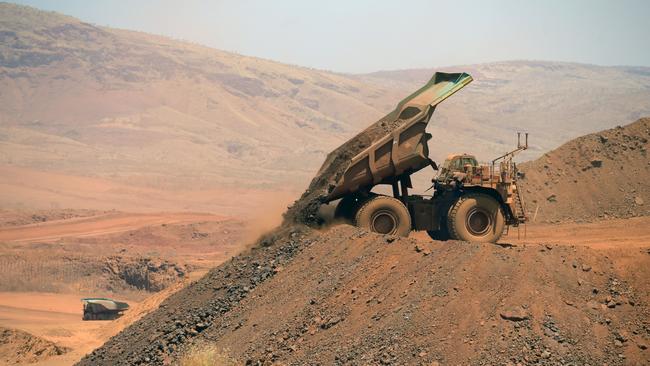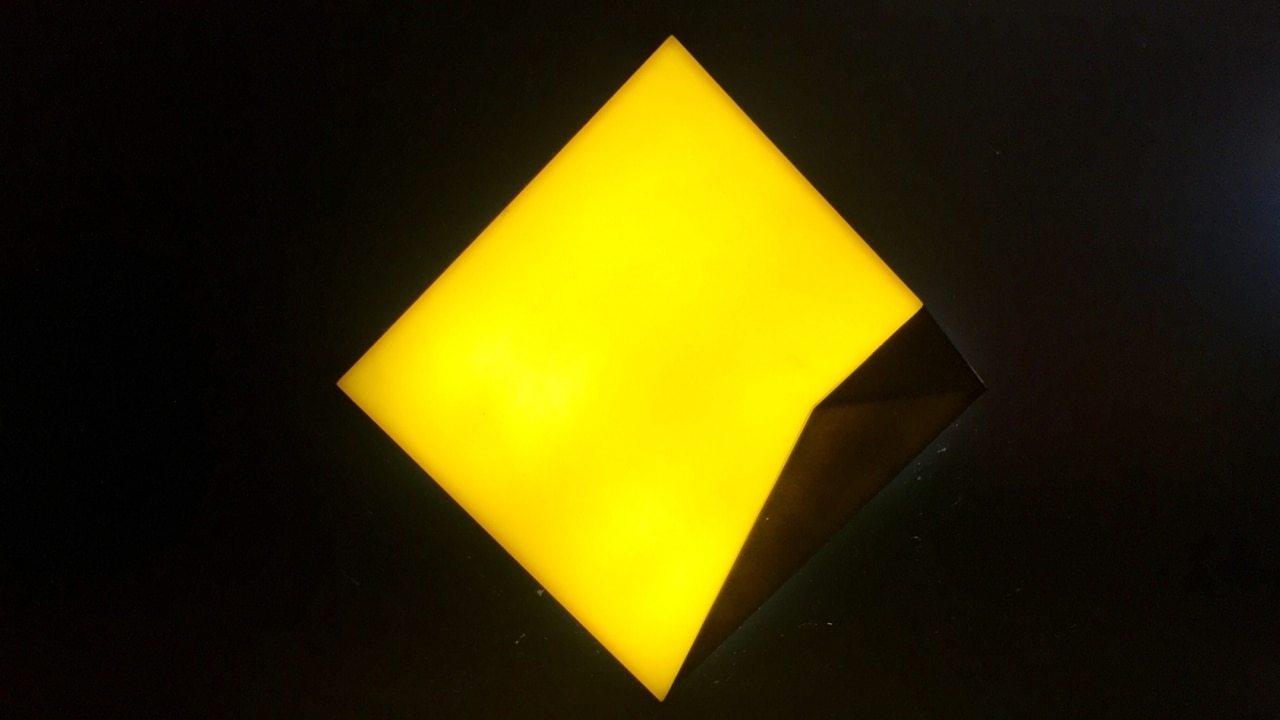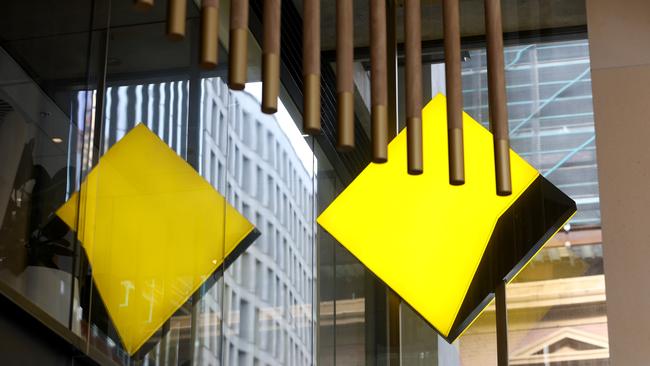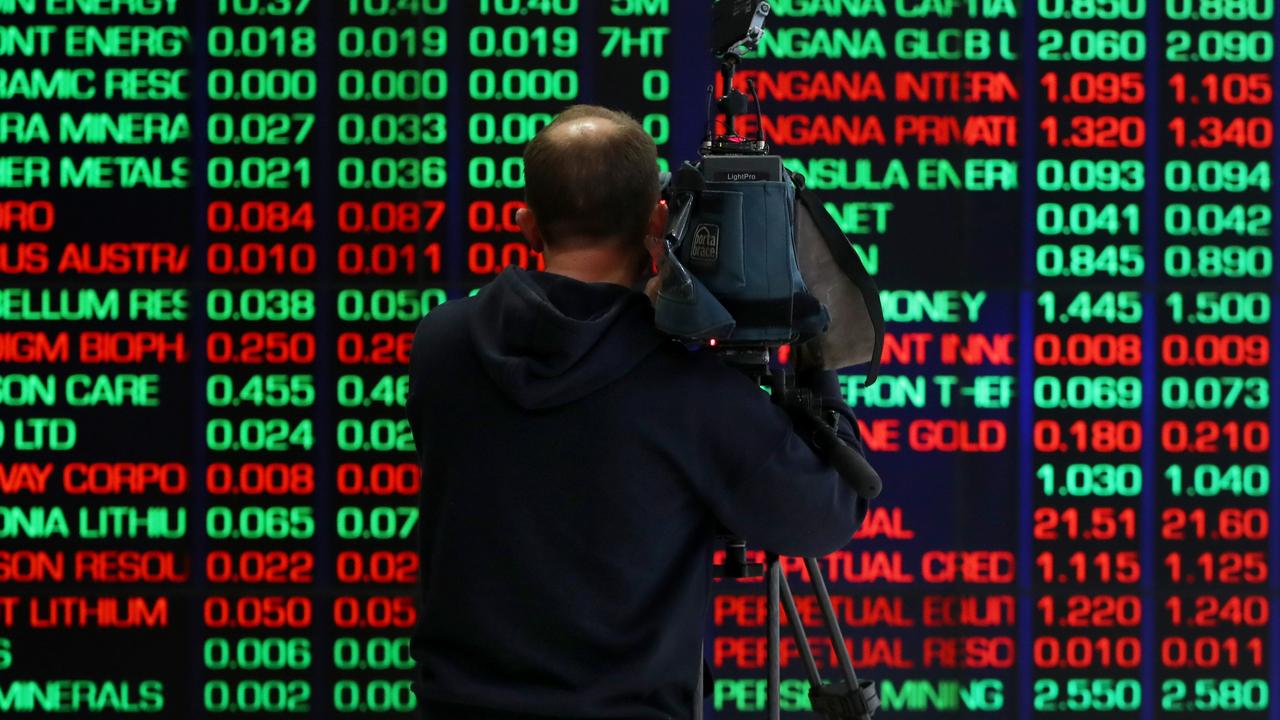Switch from banks to miners in coming months, Citi says
A surprisingly-sharp fall in the major banks and the broader share market has investors wondering if now is the time to cash in.

Business
Don't miss out on the headlines from Business. Followed categories will be added to My News.
A surprisingly-sharp fall in the major banks and the broader share market has raised questions over the sustainability of unusually high share price valuations in the banking sector in particular.
Perhaps this is the start of a classic “sell in May” move in the local share market although the annual Macquarie Australia Conference hasn’t generated much in the way of profit warnings.
US investment bank Citi is betting that valuation considerations will lead investors to switch from banks to miners in any such pullback.
Bank stocks have soared this year on expectations of interest rate cuts in the US and Australia but those hopes have been pushed out by concern about sticky inflation.
Despite flat leads from Wall Street the S&P/ASX 200 index unexpectedly dived 1.1 per cent to 7721.6 points on Thursday, erasing all of its rally that followed a less-hawkish-than-feared outcome from the Reserve Bank meeting this week. Trading volumes were light but falls broadened to include most sectors.
Banks did much of the damage with CBA shares down 2.2 per cent despite expectations of modest upgrades to consensus forecasts after its quarterly trading update.
Investors will be wondering if the market is finally tiring of stretched share price valuations on Aussie banks.

Brokers including Citi, UBS and E&P Capital were expecting of modest upgrades to the consensus estimate for CBA’s second-half cash earnings based on its quarterly trading update.
Aussie bank share price valuations have been stretched this year after a pivot away from rate hikes by the US Federal Reserve which began in October and solidified in December when chair Jay Powell said the Federal Open Market Committee had discussed the timing of rate cuts.
Bank share prices might have been artificially boosted by global index funds seeking large liquid alternatives to Chinese stocks that were cut from the MSCI indexes including its All Country World Index in February. MSCI cut 66 Chinese companies from its global benchmarks on February 29th after a market rout erased trillions of dollars in value from China’s market.
The Australian banking sector, led by CBA, now trades on a 12-month forward PE multiple of about 16 times, which is 25 per cent above its historic PE multiple of about 12 times.
CBA trades on an extraordinarily high PE multiple of about 21 times.
CBA’s average PE for the 15 years to 2020 was about 13.5 times.

In a report on Thursday, Citi noted Aussie banks have strongly outperformed the resources sector in the year to date yet its analysts had Sell ratings on all of Australia’s banks.
Australian banks now trade on PE multiples averaging 1.5 times miners versus a long-term average of about 1.1 times.
Miners are currently trading in-line with historic multiples.
If we observe the typical downturn in Miners performance from May to October, it may be an opportunity for rotation,” said Citi resources sector analyst, Paul McTaggart.
The ASX 200 Banks index rose as much as 23 per cent in the past six months as rate cut expectations took off.
It hit a record high on March 8, as CBA peaked at $121.55 a share.
After a favourable reaction to earnings reports, dividends and share buyback announcements from most of the banks this month, as well as relief that the Fed and RBA didn’t turn overtly hawkish, the ASX 200 banks index came within 1.6 per cent of the record high this week.
After Thursday’s sharp fall in banks, including a 5.7 per cent ex-dividend fall in Westpac, the renewed strength in banks in recent weeks looked to be coming to an end.
“The Banks team think that easing financial conditions has driven the rally, which will now be difficult to extrapolate out as credit, inflation and employment are all inconsistent with a rate easing environment,” McTaggart said.
“With that in mind, the team believes the 20 per cent rally in bank shares looks difficult to justify, particularly with “negative jaws” (falling revenue and rising costs) of about 2-4 per cent over the next two years.”
He says the question for portfolio managers is where to put the money if they sell the banks.
“The broader commodity price peak is behind us and with mining sector outperformance over the last few years, mining valuations are now, in aggregate, much nearer fair value levels,” he said.
“Seasonal performance trends for the miners are a negative to contend with in the next few months but on the other hand given the outperformance of the banks, mining sector relative valuations are inexpensive against an expensive banking sector in Australia.”
China still looked to be “behind the curve” on stimulus and Citi economists are expecting more to come from China’s policy makers.
Meanwhile, earnings risk for the miners is “to the upside” at spot commodity prices.
“Banks versus miners is a tough choice for local fund managers,” he said.
“Our suspicion is that portfolio managers will likely resist the temptation to reduce materially bank weightings and re-weight into the miners given concerns around seasonal performance into the Northern summer.
“If we do get a seasonal pull-back with the miners and valuations become more attractive and banks even more expensive relatively, then portfolio managers will get that opportunity to switch money out of banks and into the miners.
It might again be a case of “sell in May”, but don’t forget to buy the subsequent dip in miners.
More Coverage
Originally published as Switch from banks to miners in coming months, Citi says





